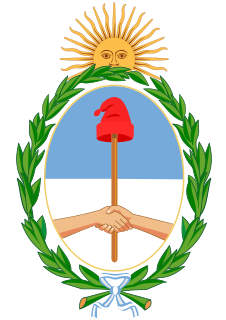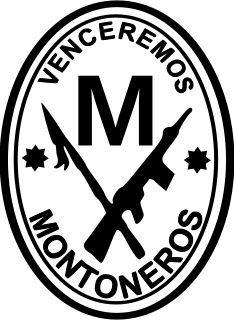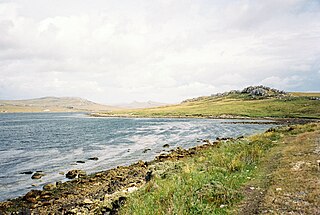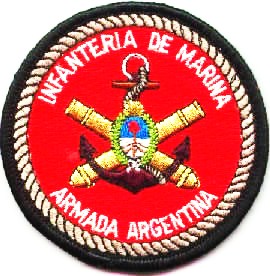This article needs additional citations for verification .(July 2016) (Learn how and when to remove this template message) |
| Argentine Nation to the Valour in Combat | |
|---|---|
 Argentine Nation to the Valour in Combat Ribbon | |
| Awarded by Argentina | |
| Type | Medal |
| Eligibility | Members of the Argentine Armed Forces |
| Awarded for | "acts of valor in combat in hazardous circumstances" |
| Status | Currently awarded |
| Statistics | |
| Last awarded | 1982 |
| Precedence | |
| Next (higher) | Argentine Nation to the Heroic Valour in Combat Cross |
Argentine Nation to the Valour in Combat Medal (Spanish: Medalla "La Nación Argentina al Valor en Combate") is the second highest military decoration given by the President of Argentina.

Spanish or Castilian is a Romance language that originated in the Castile region of Spain and today has hundreds of millions of native speakers in the Americas and Spain. It is a global language and the world's second-most spoken native language, after Mandarin Chinese.

Argentina, officially the Argentine Republic, is a country located mostly in the southern half of South America. Sharing the bulk of the Southern Cone with Chile to the west, the country is also bordered by Bolivia and Paraguay to the north, Brazil to the northeast, Uruguay and the South Atlantic Ocean to the east, and the Drake Passage to the south. With a mainland area of 2,780,400 km2 (1,073,500 sq mi), Argentina is the eighth-largest country in the world, the fourth largest in the Americas, and the largest Spanish-speaking nation. The sovereign state is subdivided into twenty-three provinces and one autonomous city, Buenos Aires, which is the federal capital of the nation as decided by Congress. The provinces and the capital have their own constitutions, but exist under a federal system. Argentina claims sovereignty over part of Antarctica, the Falkland Islands, and South Georgia and the South Sandwich Islands.
Contents
- Posthumous
- Argentine Army
- Argentine Air Force
- During Lifetime
- Argentine Army 2
- Argentine Navy
- See also
- References
The decoration consists of a bronze circular medal bearing the Coat of arms of Argentina surrounded by the legends "La Nación Argentina" (top) and "al Valor en Combate" (bottom), suspended from a chest ribbon of equal light blue-white-light blue stripes.

The coat of arms of the Argentine Republic or Argentine shield was established in its current form in 1944, but has its origins in the seal of the General Constituent Assembly of 1813. It is supposed that it was chosen quickly because of the existence of a decree signed on February 22 sealed with the symbol. The first mention of it in a public document dates to March 12 of that same year, in which it is stated that the seal had to be used by the executive power, that is, the second triumvirate. On April 13 the National Assembly coined the new silver and gold coins, each with the seal of the assembly on the reverse, and on April 27 the coat of arms became a national emblem. Although the coat of arms is not currently shown on flags, the Buenos Aires-born military leader Manuel Belgrano ordered to paint it over the flag he gave to the city of San Salvador de Jujuy, and during the Argentine War of Independence most flags had the coat of arms.
Recipients of the Medal for service during the 1982 Falklands War (Spanish : Guerra de las Malvinas/Guerra del Atlántico Sur) are listed below.

The Falklands War, also known as the Falklands Conflict, Falklands Crisis, Malvinas War, South Atlantic Conflict, and the Guerra del Atlántico Sur, was a ten-week war between Argentina and the United Kingdom over two British dependent territories in the South Atlantic: the Falkland Islands, and its territorial dependency, the South Georgia and the South Sandwich Islands. It began on Friday, 2 April 1982, when Argentina invaded and occupied the Falkland Islands in an attempt to establish the sovereignty it had claimed over them. On 5 April, the British government dispatched a naval task force to engage the Argentine Navy and Air Force before making an amphibious assault on the islands. The conflict lasted 74 days and ended with the Argentine surrender on 14 June 1982, returning the islands to British control. In total, 649 Argentine military personnel, 255 British military personnel, and three Falkland Islanders died during the hostilities.









